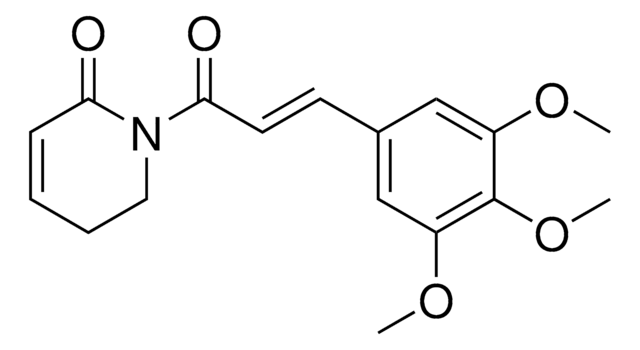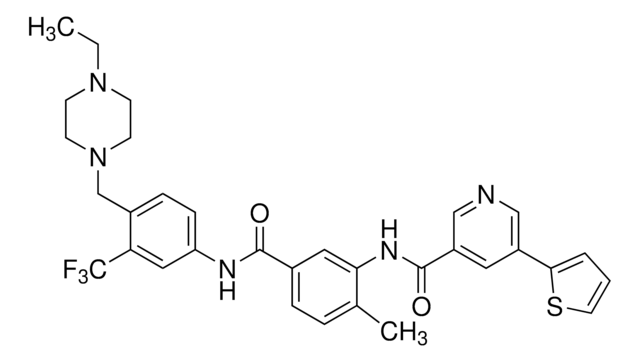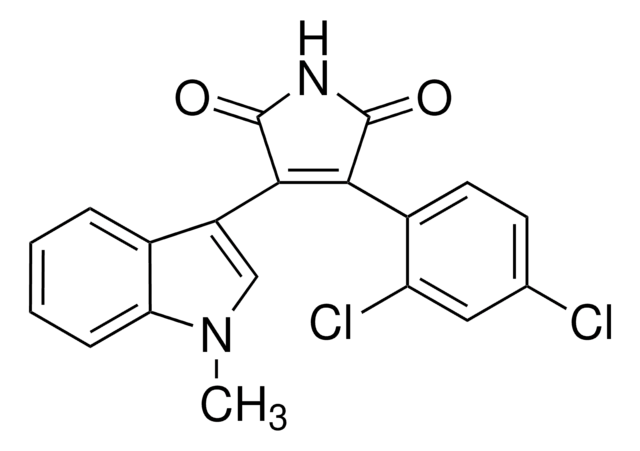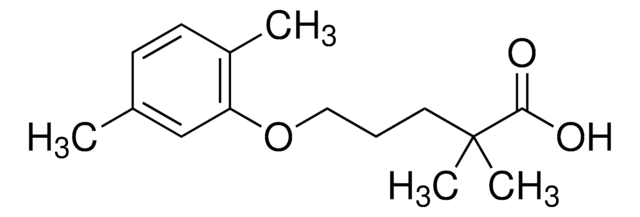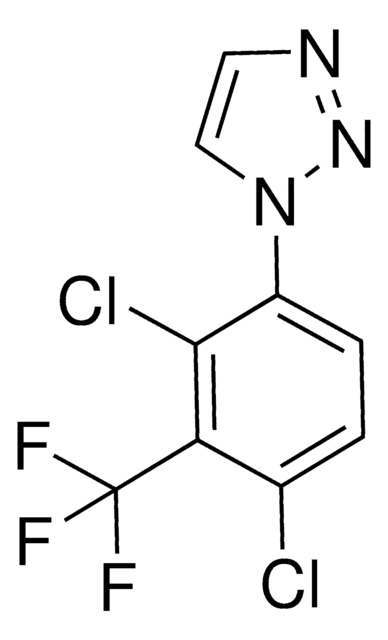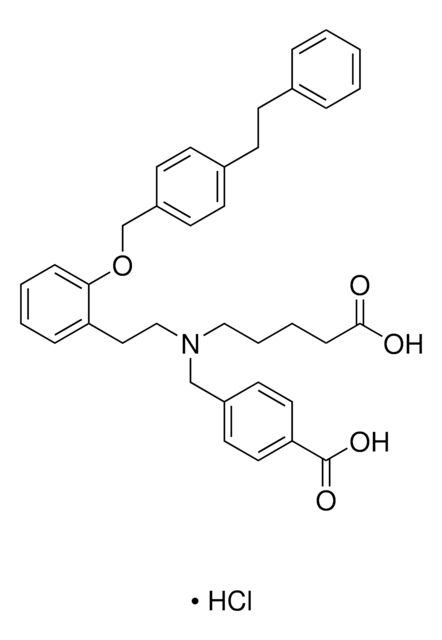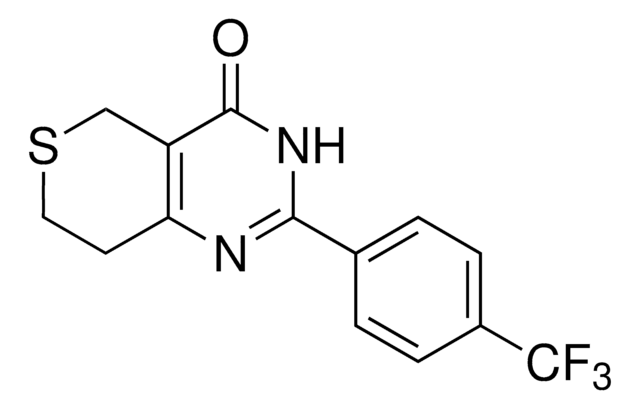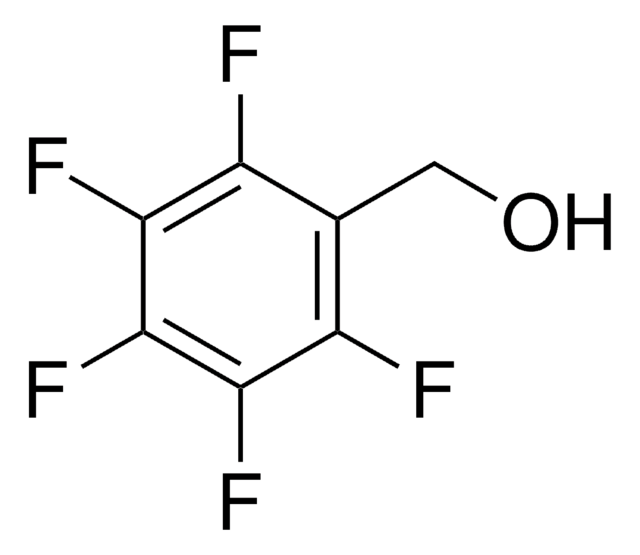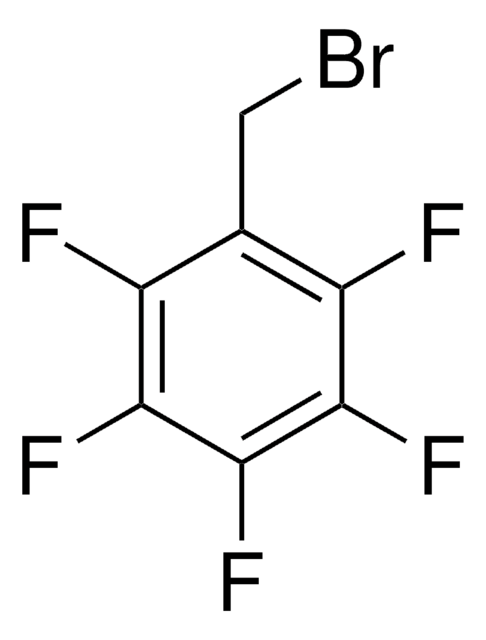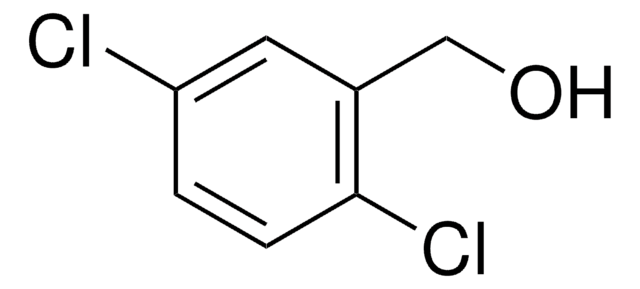SML1180
WWL229
≥98% (HPLC)
Sinónimos:
2-(3-Methoxypropyl)-1-piperidinecarboxylic acid 4-nitrophenyl ester, 4-Nitrophenyl 2-(3-methoxypropyl)piperidine-1-carboxylate
About This Item
Productos recomendados
Nivel de calidad
Ensayo
≥98% (HPLC)
Formulario
oil
color
colorless to light yellow
temp. de almacenamiento
2-8°C
cadena SMILES
O=C(OC1=CC=C([N+]([O-])=O)C=C1)N2C(CCCOC)CCCC2
InChI
1S/C16H22N2O5/c1-22-12-4-6-13-5-2-3-11-17(13)16(19)23-15-9-7-14(8-10-15)18(20)21/h7-10,13H,2-6,11-12H2,1H3
Clave InChI
XVBRVSAGMWRVCK-UHFFFAOYSA-N
1 of 4
Este artículo | 101052 | 183601 | 90257 |
|---|---|---|---|
| assay 98% | assay 99% | assay 99% | assay ≥98.5% (GC) |
| Quality Level 200 | Quality Level 200 | Quality Level 200 | Quality Level 100 |
| mp 37-38 °C (lit.) | mp 19-20 °C (lit.) | mp 79-80 °C (lit.) | mp 19-20 °C (lit.) |
| form solid | form - | form powder | form liquid |
| bp 114-115 °C/60 mmHg (lit.) | bp 174-175 °C (lit.) | bp - | bp 174-175 °C (lit.) |
Acciones bioquímicas o fisiológicas
Código de clase de almacenamiento
11 - Combustible Solids
Clase de riesgo para el agua (WGK)
WGK 3
Punto de inflamabilidad (°F)
Not applicable
Punto de inflamabilidad (°C)
Not applicable
Elija entre una de las versiones más recientes:
Certificados de análisis (COA)
¿No ve la versión correcta?
Si necesita una versión concreta, puede buscar un certificado específico por el número de lote.
¿Ya tiene este producto?
Encuentre la documentación para los productos que ha comprado recientemente en la Biblioteca de documentos.
Nuestro equipo de científicos tiene experiencia en todas las áreas de investigación: Ciencias de la vida, Ciencia de los materiales, Síntesis química, Cromatografía, Analítica y muchas otras.
Póngase en contacto con el Servicio técnico